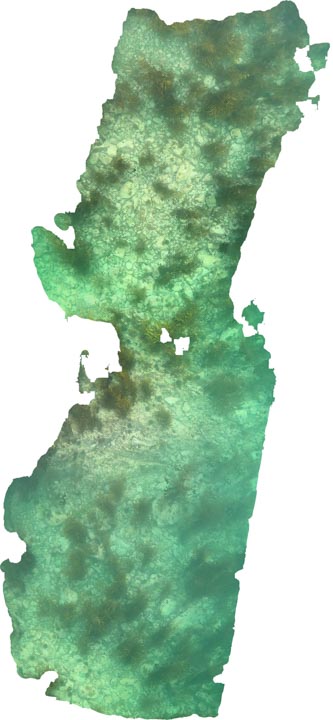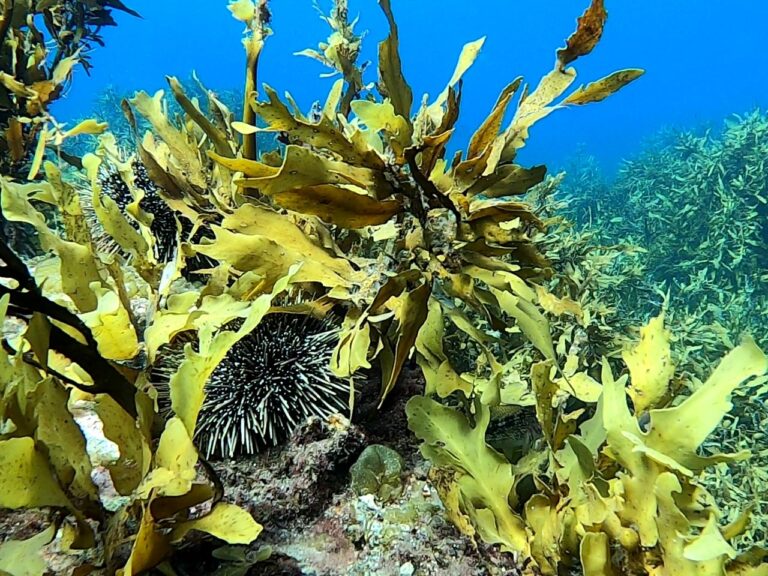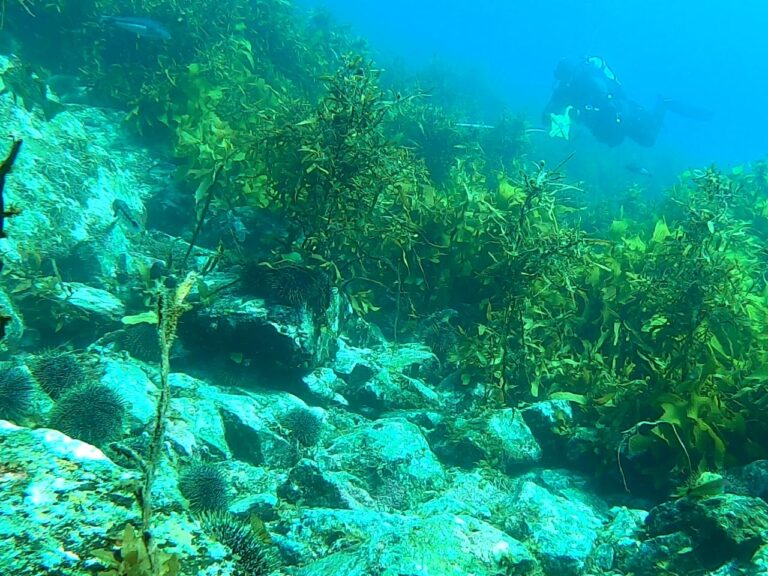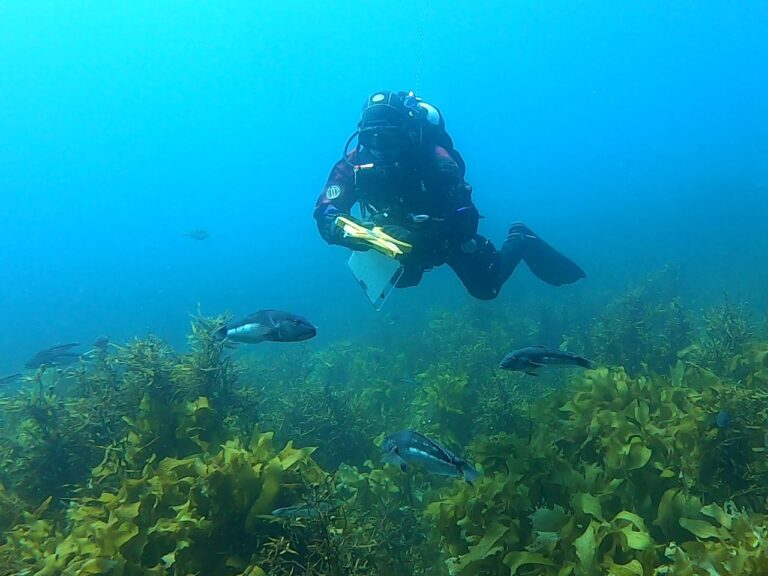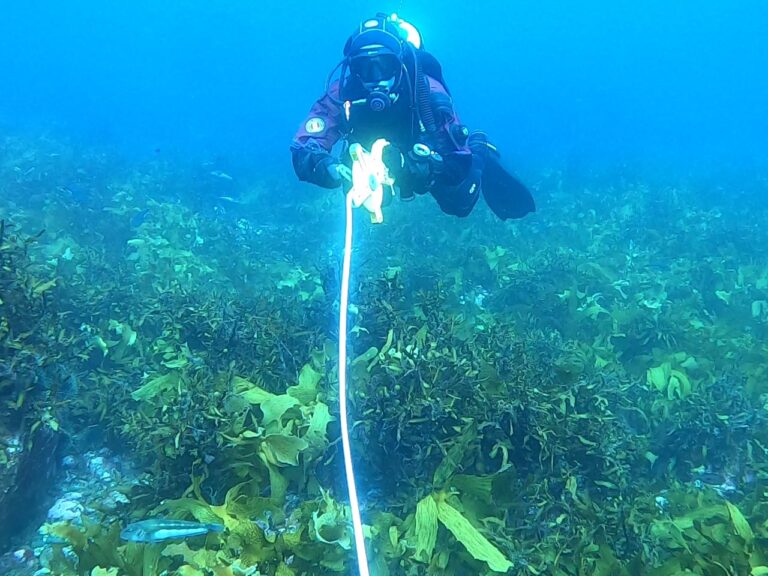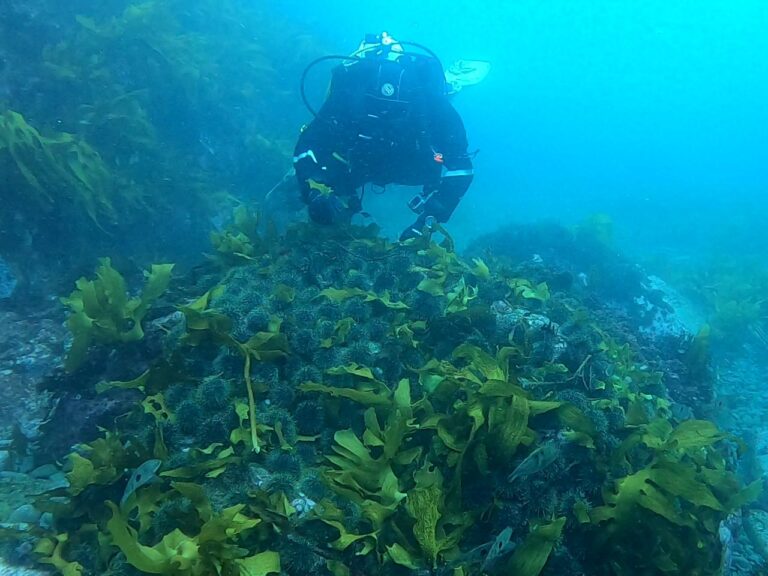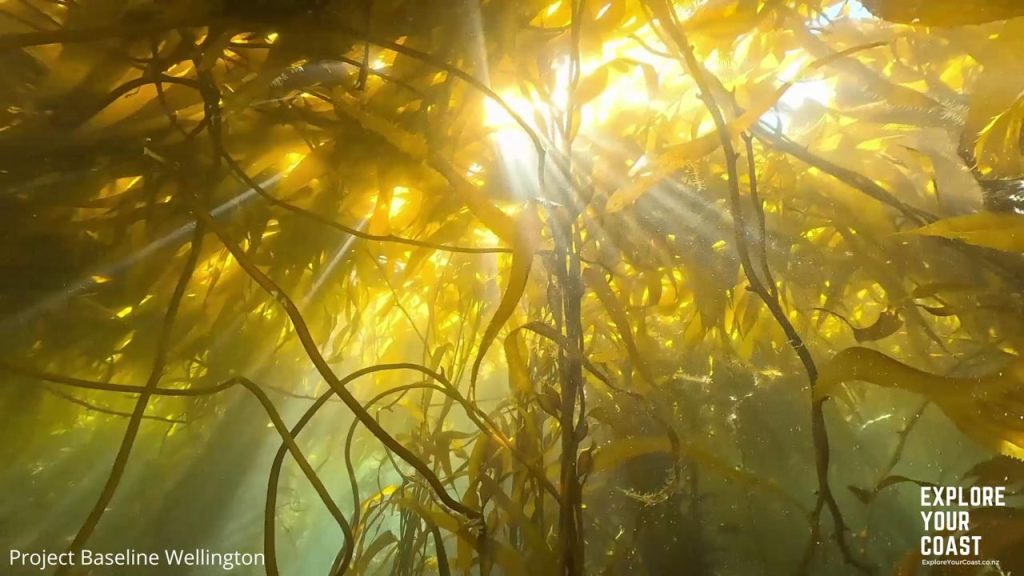All about Kina
Kina, the sea urchin Evechinus chloroticus, is a common and thought after seafood species in New Zealand’s kelp forest. Above a critical density the hungry herbivores rapidly turn thriving underwater forests into rock barrens. So why do kina numbers seemingly explode in many places around New Zealand? It is due to overfishing of crayfish, snapper and other large finfish species. Without natural predators kina also change their feeding behaviour to active foraging, causing the rapid decline of kelp forests.
Volunteers removed kina under a special permit from Kau Point in Wellington Harbour between December 2022 and February 2023. Just 5 months after the removal event the kelp forest started to regrow and 17 months after the removal Carpophyllum and Giant Kelp are regrowing on the deeper parts of the reef. Check out this video from May 2024 and the changes on the reef in the video from November 2024, 23 months after the removal. Read more about the project below.
Kina in Wellington Harbour
Divers have observed an increasing number of kina and a decline of large brown seaweed in Wellington harbour. At Kau Point kina barren could only be found at the fringe of the kelp forest at or below 6m. In 2021 we found barren areas in less than 2m depth.
Between March 2021 and April 2022 we lost a 5m band of dense seaweed forest and the remaining seaweed was left considerable less dense! Check out the video comparison and read more in this blog article.
Volunteer divers apply a range of methods to capture kina numbers and change in seaweed coverage. Our observations support the Controlled Kina Removal project by Taranaki Whānui & Te Atiawa Nui Tonu Fisheries. We have gathered the baseline data for the project and will continue monitoring the effect of kina removal on the regeneration of kelp in the area. Check out the monitoring reports below.
- Kina Monitoring data Wellington Harbour (2016 to Jan 2022, pdf 11MB)
- Kina Quality Check (March 2022, pdf 2MB)
- Kau Point Transects & Comparison Mar2021-Apr2022 (pdf 3MB)
- Video comparison Mar2021-April2022 at one of the permanent markers.
- Take a dive in the kina removal project area (video, April 2022)
- KinaKam – Monitoring the impact of kina grazing and barren formation (March-May 2022, pdf 6MB)
- Photomosaic Baseline (April-June 2022, pdf 1.4MB)
- Kina Quality 14 August 2022 (recreational catch, snorkel)
collected 49 kina, close to or in kelp. Roe of 47 kina with fresh and sweet taste was used for various delicious recipes.
If you are a scuba diver and interested in getting involved in marine citizen science get in touch with Nicole, read about the giant kelp monitoring project or join the Big Kina Count!
Project Baseline Wellington is a group of the volunteer citizen scientist.
For more information about the Controlled Kina Removal Project and how to get involved go to www.kinaowhanganuiatara.nz.
New Zealand Marine Science Conference 2023 Poster – click here for the pdf version.












Wellington's Big Kina Count - Get Involved!
Every scuba diver with experience in diving locally can help! We use data from Wellington’s #BigKinaCount to understand the kina population around the Miramar Peninsula! You can join the count with one of the local dive shops or the Wellington Underwater Club!

Photogrammetry and Transects
A drastic change in the kina population and seaweed coverage at a popular dive site at Kapiti Island shook us up in March 2021. The conditions were good shortly after, so we returned with the Guardians of Kapiti Island Marine Reserve and a plan to use different methods for documentation.
Visibility at Kapiti Island is in general better than in Wellington harbour and we were able to build photomosaics of larger areas from our video footage. This method proved useful for sections of reef with reduced kelp coverage and barren patches.
We also conducted counts along the transect tapes to get a more accurate picture of kina numbers. In areas with kelp coverage kina are often well hidden and divers have to get under the kelp canopy and right down to the holdfasts for counting.
You can find details on the monitoring methods and download the monitoring report for the dives at Kapiti Island and Pukerua Bay from March 2021 here:
- Kina Monitoring Kapiti Island – Pukerua Bay (March 2021, pdf 5MB)
We captured another photomosaic at Pukerua Bay in March 2021.
